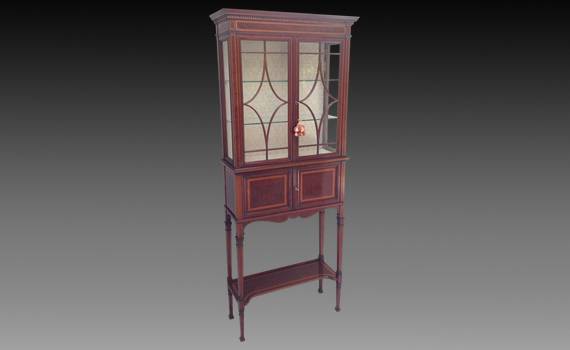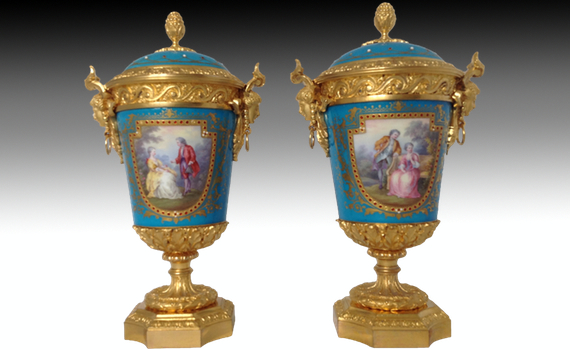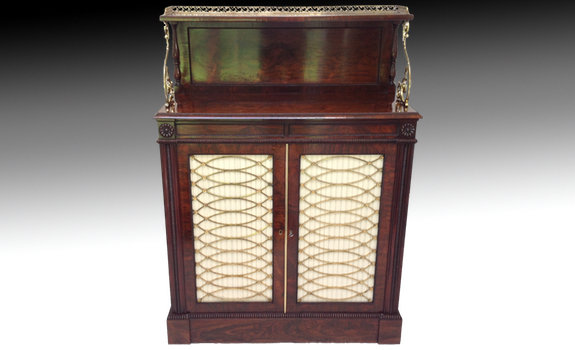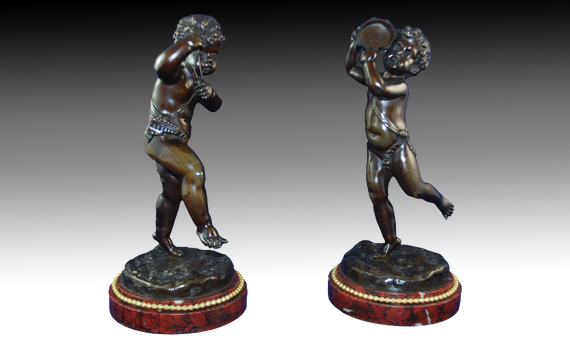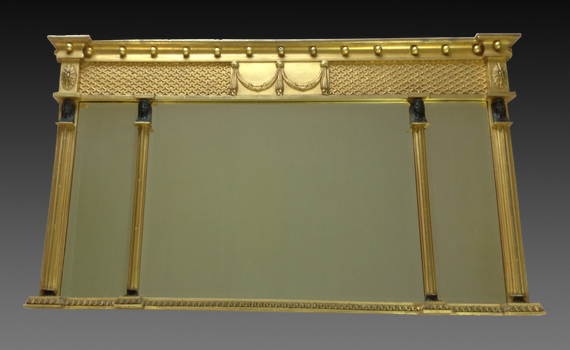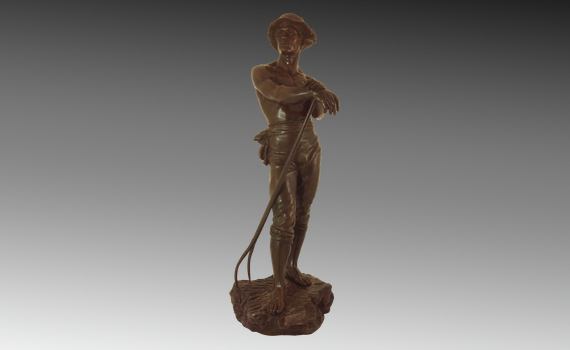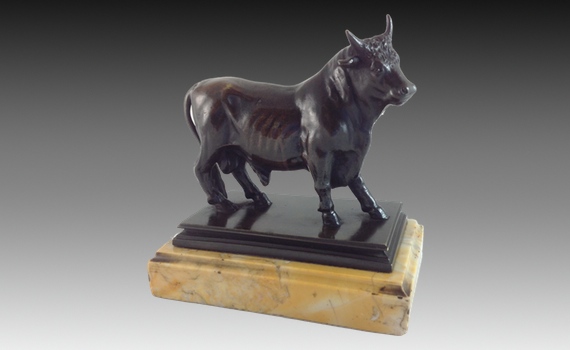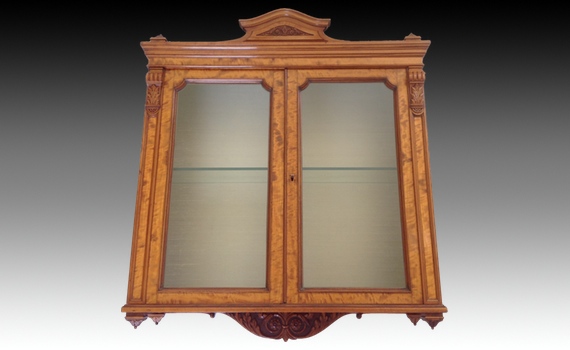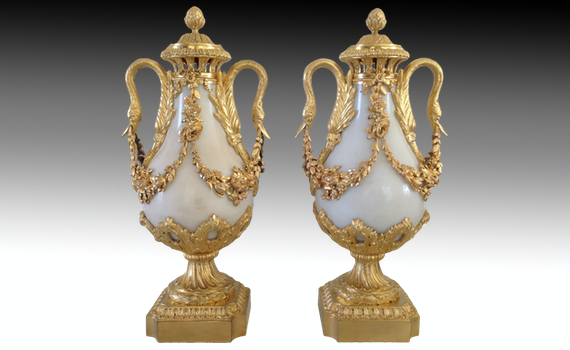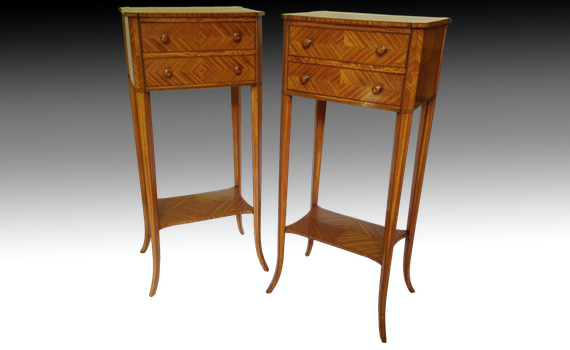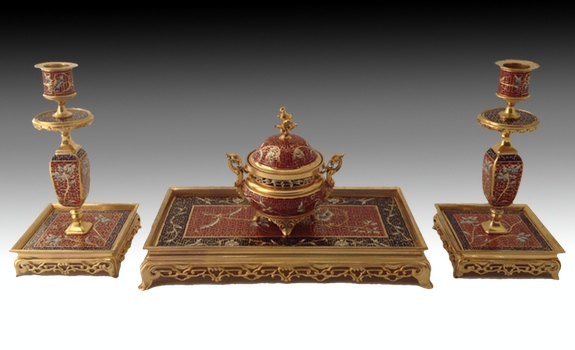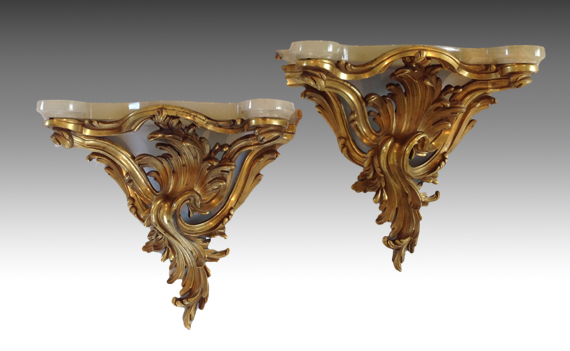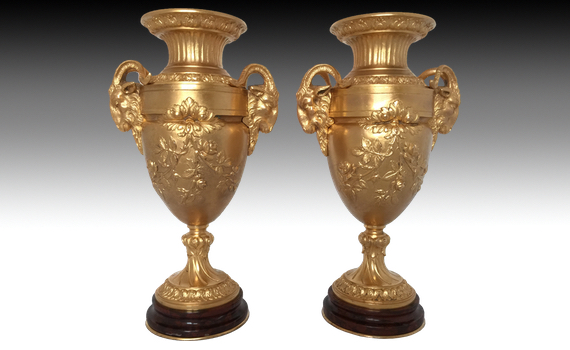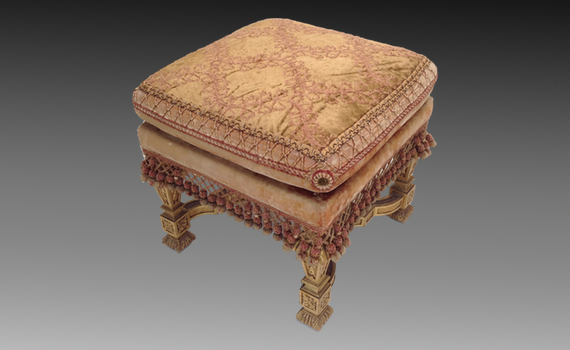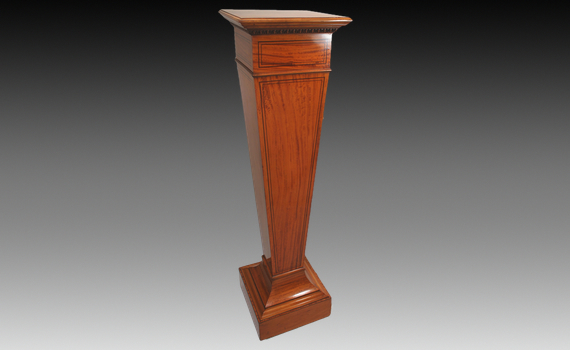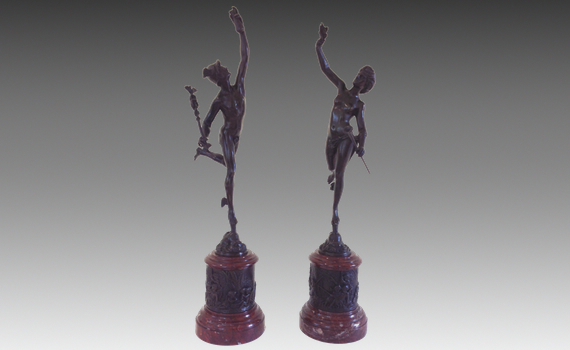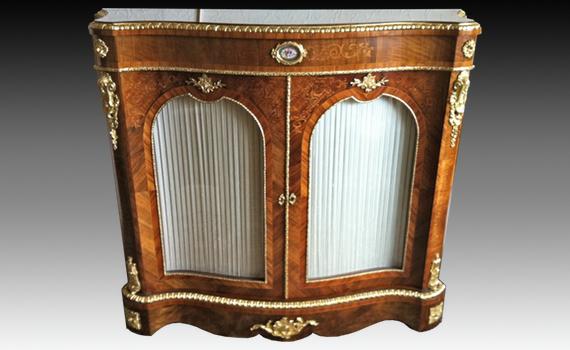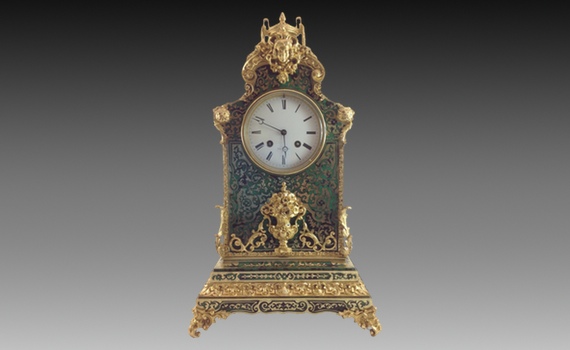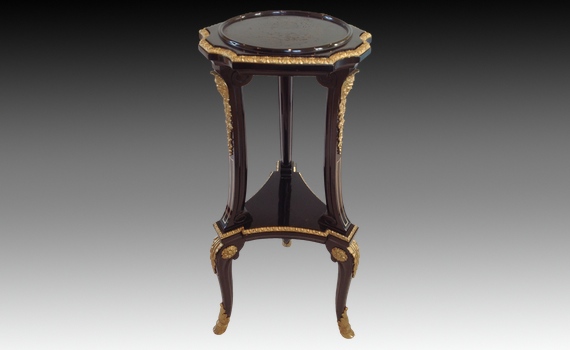
Blake
A mid 19th century ebonised and gilt bronze mounted stand in the Louis XIV style. The shaped top with circular moulded rim, above three shaped supports with brass line inlay united by a platform stretcher. The well cast and chased mounts when removed are each incised to the reverse ‘Blake’. The three sabots each incised visibly when inverted.
English
Circa 1840
Although little is known of the Blake Family, they are listed at 8 Stephen Street, off Tottenham Court Road, between 1826 and 1881. Robert Blake is listed as a cabinet inlayer and buhl manufacturer between 1826 and 1839. A Charles Blake was born to Robert and Anne on 17th March, 1814 in Holborn ‘lying in hospital’. Another son Henry was christened in 1821. From 1842 they are listed in Kelly’s as ‘Blake, Geo. & Bros…’ and from 1847 as ‘Blake, Charles, James & Henry….’. As well as manufacturers they are also listed as ‘buhl cutters’ from 1847 onwards and there are no references at this date to the Blakes as cabinet makers. In 1845 Geo. Blake & Bros. are listed at Stephen Street as ‘cabinet inlayers’ and in the same year the firm of Geo. Blake & Co. are listed at 130 Mount Street, Berkeley Square. They opened up new premises in the heart of Mayfair as well as keeping on the workshops of the Tottenham Court Road. It seems most likely that the Mount Street address was established as a showroom or retail premises rather than a work shop.
The only specimens of boulle work furniture by Blake so far identified are a pair of free standing commodes in the Frick collection, and a companion pair sold by Sotheby’s, 2 Nov 1990, lot 231, and a fifth example sold on 29 Oct 1993, lot 71. All have the same ‘Blake’ incised to the reverse of various mounts. See Robert Blake, page 112/113, Pictorial Dictionary of marked London Furniture 1700-1840.
There is a magnificent piano at the Metropolitan Museum, New York by G.H. Blake, and a circular table at Alnwick Castle, the seat of the Duke of Northumberland. An associate group of eight tables based on a design by Richard Bridgens in ‘Design from Furniture and Candelabra’, 1838 were made by E.H. Baldock with marquetry attributed to Henry Blake. It must be assumed that many of these makers and dealers knew each other and were constantly calling in on each other’s premises to see what was being made. The great late nineteenth century commentator F. Litchfield, after a paragraph on John Webb in the Illustrated History of Furniture, writes The name of Blake too, is one that will be remembered by some of our older readers who were interested in marqueterie furniture of forty years ago; an inlaid centre table which he made for the Duke of Northumberland, from a design by Mr. C.P. Slocombe, is now in Syon House; he also made excellent copies of Louis XIV furniture.
